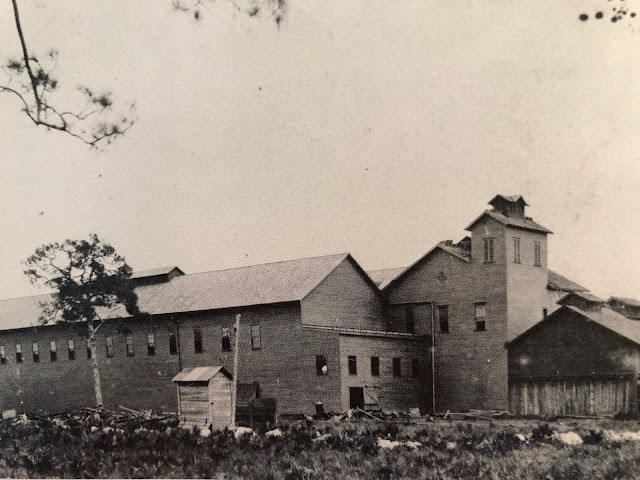In around 1891 the enterprising founder of our town, Isaac
Trabue, saw another way to help fund his retirement. He opened the first Ice Factory designed to
enable the delivery of fish north. It
was a steam-based plant located near Virginia between Berry and Shreve St. The Florida Southern Railway ran through the
area and onward west to the Long Dock which was located off the land where the Isles
Yacht Club is today. When you walk along
the linear park in Punta Gorda, you are essentially on the beds where the
railroad once ran.
The plant turned out about 15 tons of ice a day, but only
during the fishing season. Ice was slid down a shute to fishing boats that unloaded
their catch over ice onto wagons where it was hauled back to the factory. There it was packed onto box cars (on a railroad
spur) for shipment on the Florida Southern Railway heading north from the Long
Dock.
Unfortunately for Trabue in 1895, a group of local
businessmen organized another company, the Punta Gorda Ice and Power Company,
that would be open all year, produce more ice per day, and be most importantly
priced cheaper. Townspeople thought that
Trabue’s price for ice was exorbitant.
To make matters worse for Trabue’s plant, Henry Plant had fully acquired
the Florida Southern in 1897 and his main business interests were in
Tampa. He pulled up the track leading to
the long dock leaving Trabue’s plant stranded.
Not to be undone, in 1902 working with a group of investors
from Philadelphia, Trabue opened with them the Consolidated Ice Manufacturing,
Refrigeration and Fish Company with the intent of furnishing cheaper ice to the
fish industry and then manufacturing fertilizer from trash fish. The large plant was built in 1902 (looks as though from photographs that the remnants of the earlier plant were likely incorporated
into the larger structure). Then at the
harbor near Berry a fertilizer building was constructed to process the fish for
fertilizer.
This company failed to go into production and the building
was abandoned and eventually torn down by the city after a small boy was killed
by a timber that fell from the remains. Remains
of pilings on which the fertilizer plant rested can still be viewed near the
Boat Club clubhouse on the bay. ( See earlier post about those remnants)
Sources:
Peeples, Vernon, Punta Gorda and the Charlotte Harbor Area
Williams, Lindsey, Out Fascinating Past
Maps and Photographs from the Vernon Peeples Collection, Punta
Gorda History Center

No comments:
Post a Comment